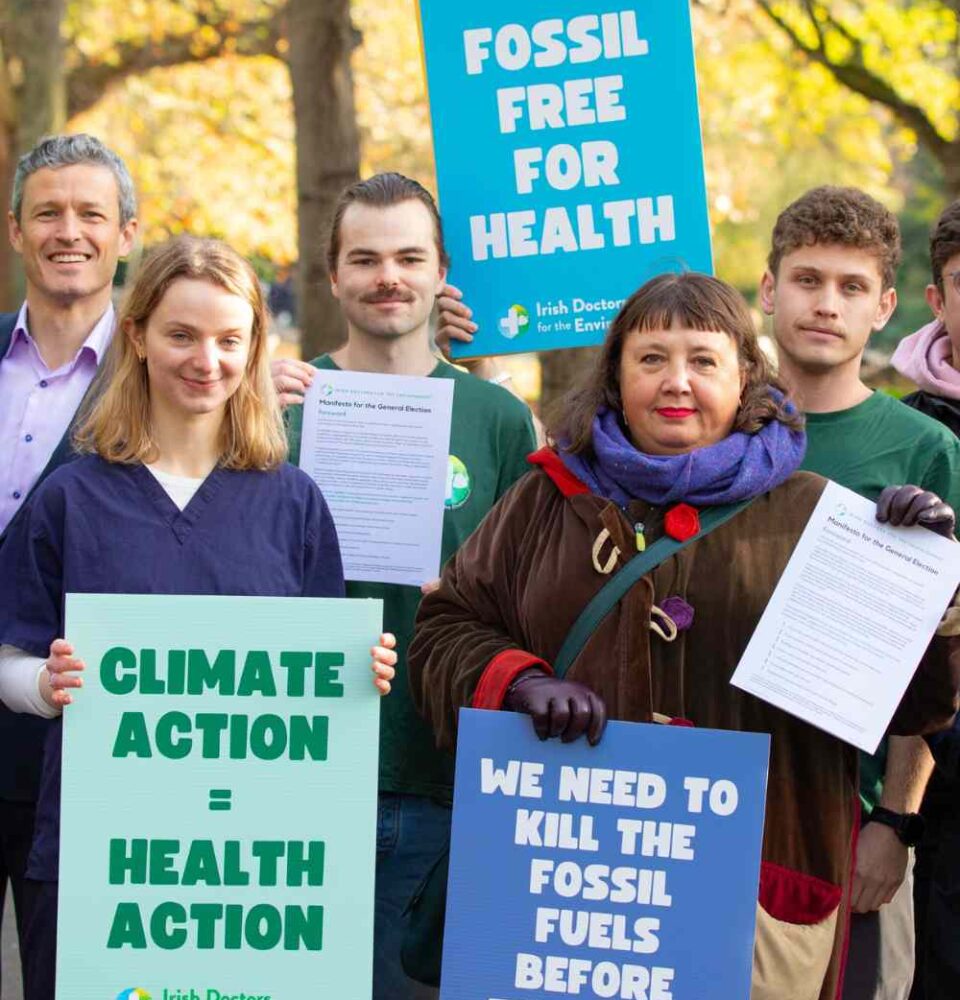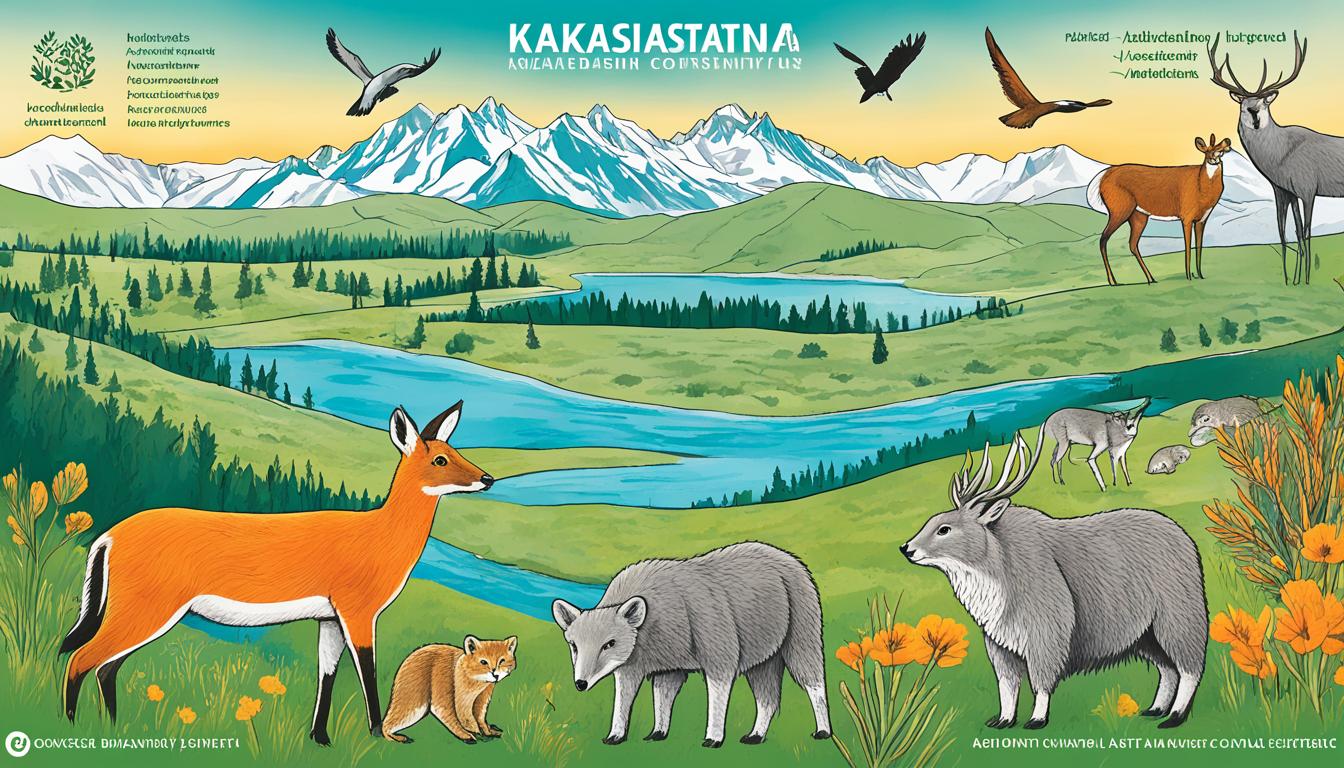What is the European Commission’s Roadmap towards Nature Credits?
- Jackie De Burca
- September 28, 2025
What is the European Commission's Roadmap towards Nature Credits?
“When I first saw the news of the EU’s Roadmap towards nature credits, I was excited, but then reality set in. So I set up an interview with Brian MacSharry of the European Environment Agency (EEA) ” Jackie De Burca
Listen To This Podcast Interview With Dr. Brian MacSharry

However, undoubtedly, the European Commission did take a significant step promoting environmental sustainability by publishing a Roadmap towards Nature Credits on 7 July 2025.
This strategic approach aims to stimulate private investment in nature-positive actions across the EU, complementing public funding by creating market-based incentives to protect and restore nature.
The initiative rewards those who contribute to ecosystem restoration and conservation, fostering a culture of environmental stewardship.
EU Roadmap Towards Nature Credits Podcast Interview Coming Soon
Key Concepts
- The European Commission’s Roadmap is a strategic plan to boost private investment in environmental conservation.
- It aims to complement public funding with market-based incentives.
- The initiative promotes nature-positive actions across the EU.
- Ecosystem restoration and conservation efforts are rewarded.
- The Roadmap is a significant step towards achieving environmental sustainability.

Key Perspectives
| Perspective | Key Messages |
|---|---|
| EU Commissioners | Nature credits value nature, mobilise private finance, and provides revenue for land stewards. |
| Financial Press | Highlights market structure, demand-supply assessment, and alignment with broader ESG trends. |
| Experts / Agencies | Standard setting, governance frameworks, and bottom-up stakeholder involvement. |
| Environmental NGOs | Critique of offsetting logic and potential greenwashing; call for stronger public policy measures. |
The Concept of Nature Credits and Their Importance
The concept of nature credits is gaining traction as a means to channel private finance into ecosystem restoration. Nature credits are emerging as an innovative mechanism to support conservation initiatives and biodiversity protection.
Definition and Fundamental Principles
Nature credits are defined as a financial instrument designed to promote conservation and restoration of ecosystems. The fundamental principle behind nature credits is to create a market-driven approach to environmental conservation.
Distinguishing Nature Credits from Carbon Credits
Unlike carbon credits, which focus solely on reducing carbon emissions, nature credits encompass a broader range of ecosystem services, including biodiversity conservation and water quality improvement.
“With this roadmap, we are taking a bold step to recognise nature as a strategic asset for Europe’s future. Nature credits have the potential to attract essential private investment, while also rewarding those who are the custodians of our land and seas…”
Valuing Ecosystem Services Through Credits
Nature credits value ecosystem services by assigning a financial value to conservation efforts. This approach enables landowners and conservationists to generate revenue through the sale of credits, promoting sustainable land-use practices.

Olive trees Jackie De Burca Constructive Voices
The Ecological and Economic Rationale
The ecological rationale for nature credits lies in their ability to promote biodiversity conservation and ecosystem restoration. Economically, nature credits offer a new revenue stream for landowners and conservation organisations, incentivising sustainable land-use practices.
However, Friends Of The Earth Don’t Agree
““Nature credits are a cover for inaction, a greenwashing shortcut that allows corporations to keep destroying nature as long as they pay for it… Instead of treating biodiversity as a business opportunity, EU decision‑makers must strengthen environmental law, properly fund nature restoration and redirect harmful subsidies.”
The European Commission's Roadmap towards Nature Credits
The European Commission is spearheading an initiative to establish a comprehensive framework for nature credits, aligning with its broader environmental goals. This move is part of a larger strategy to promote sustainable practices and reduce the environmental footprint of economic activities.
Key Milestones and Implementation Timeline
The roadmap outlines several key milestones, including the development of robust methodologies for measuring and verifying nature credits. The implementation timeline is expected to be phased, with initial guidelines being issued within the next two years.
Carbon offsetting strategies will play a crucial role in this process, enabling companies to compensate for their environmental impact by investing in projects that restore or preserve natural habitats.
Governance Structure and Institutional Framework
A strong governance structure is being established to oversee the implementation of nature credits. This includes the creation of an institutional framework that will be responsible for certifying and verifying nature credits.
The integration of green technology solutions is also a key aspect of this framework, ensuring that the methodologies used are at the forefront of environmental science.

Beautiful bird Jackie De Burca Constructive Voices
Role of Member States in Implementation
Member states will have a significant role in implementing the nature credits system, with responsibilities including the establishment of national registries and the monitoring of credit transactions.
Oversight Mechanisms and Accountability
To ensure the integrity of the system, robust oversight mechanisms will be put in place. These will include regular audits and the imposition of penalties for non-compliance.
| Milestone | Timeline | Responsibility |
|---|---|---|
| Development of methodologies | 2025 | European Commission |
| Issuance of initial guidelines | 2026 | European Commission |
| Establishment of national registries | 2027 | Member States |
Historical Context: From Biodiversity Strategy to Nature Credits
As the EU moves towards implementing nature credits, it’s essential to understand the historical context that has shaped this initiative. The journey towards nature credits is deeply rooted in the EU’s broader biodiversity strategy and environmental policies.
The European Green Deal as a Foundation
The European Green Deal serves as a critical foundation for the development of nature credits, emphasizing eco-friendly practices and climate change mitigation. Launched in 2019, it aims to make the EU’s economy sustainable by turning climate and environmental challenges into opportunities.
Evolution of EU Environmental Market Mechanisms
The EU has a history of developing environmental market mechanisms, with the EU Emissions Trading System (EU ETS) being a prime example. Lessons from the EU ETS have been pivotal in shaping the concept of nature credits.
Lessons from the EU Emissions Trading System
The EU ETS has demonstrated the effectiveness of market-based mechanisms in reducing greenhouse gas emissions. Similarly, nature credits aim to create a market-driven approach to biodiversity conservation.
Integration with Existing Conservation Frameworks
Nature credits are designed to integrate with existing conservation frameworks, enhancing their effectiveness. This integration is crucial for achieving the EU’s biodiversity goals and promoting eco-friendly practices among businesses and landowners.
“We have to put nature on the balance sheet. That’s exactly what nature credits do. When well‑designed, they will provide an efficient, market‑driven instrument that encourages the private sector to invest and innovate. With investment and innovation, we generate revenue for those who work to protect nature…” Ursula von der Leyen, President of the Europe
By understanding the historical context and evolution of nature credits, we can better appreciate the EU’s commitment to climate change mitigation and environmental protection.
Scientific Methodologies Underpinning Nature Credits
Robust scientific methodologies are essential for the successful implementation of nature credits. These methodologies provide a foundation for measuring and quantifying biodiversity, setting ecological baselines, and ensuring additionality requirements are met.
Biodiversity Measurement and Quantification Approaches
The measurement and quantification of biodiversity are critical components of nature credits. Robust methodologies are being developed to assess biodiversity, including the use of indicators such as species richness, habitat quality, and ecosystem services. These approaches enable the quantification of biodiversity gains and losses, facilitating the creation of nature credits.
Ecological Baselines and Additionality Requirements
Ecological baselines and additionality requirements are fundamental to ensuring the integrity of nature credits. Ecological baselines provide a reference point against which biodiversity gains are measured, while additionality requirements ensure that credits are only issued for genuine biodiversity enhancements.
Habitat-Specific Assessment Protocols
Habitat-specific assessment protocols are being developed to assess biodiversity in various ecosystems, including forests, grasslands, and wetlands. These protocols provide a standardized framework for assessing biodiversity, enabling the creation of credible nature credits.
Technology and Monitoring Solutions
Technology and monitoring solutions, such as remote sensing and field monitoring, are being utilized to track biodiversity changes and verify the effectiveness of conservation efforts.  This enhances the credibility of nature credits and ensures that they are based on robust scientific evidence.
This enhances the credibility of nature credits and ensures that they are based on robust scientific evidence.
Market Structure and Financial Mechanisms
The establishment of a robust market structure is pivotal for the successful implementation of nature credits in Europe. As the European Commission advances its roadmap, the focus on creating effective financial mechanisms is becoming increasingly important.
Credit Generation, Certification, and Verification
The process of generating, certifying, and verifying nature credits is fundamental to their credibility and tradability. Robust methodologies are required to ensure that credits accurately represent environmental benefits. This involves rigorous scientific assessment and transparent reporting mechanisms.
“The integrity of nature credits hinges on the reliability of their generation and verification processes,” as noted by environmental experts. Ensuring the credibility of these credits is crucial for maintaining trust in the market.
Trading Platforms and Financial Instruments
The development of trading platforms and financial instruments is crucial for facilitating the exchange of nature credits. These platforms will enable buyers and sellers to engage in transactions efficiently, promoting liquidity in the market.
Price Discovery and Market Dynamics
Effective price discovery mechanisms are essential for a functioning nature credits market. As demand and supply fluctuate, prices must reflect the true value of the environmental benefits represented by the credits.
Investment Opportunities and Risk Management
Nature credits offer new investment opportunities in the environmental sector. However, they also come with risks that need to be managed through diversification and robust risk assessment frameworks.
As the market for nature credits evolves, it is expected that environmental sustainability and conservation initiatives will be significantly enhanced. The European Commission’s roadmap is set to play a crucial role in shaping this emerging market.
Economic Implications for European Businesses and Landowners
European businesses and landowners are on the cusp of a significant economic shift with the European Commission’s nature credits initiative. The introduction of this system will require adjustments in how companies operate and how land is managed, potentially leading to new economic opportunities and challenges.
Compliance Requirements Across Different Sectors
Different sectors will face varying compliance requirements under the nature credits system. For instance, industries with high environmental impact, such as agriculture and construction, will need to adopt biodiversity protection measures and potentially purchase nature credits to offset their ecological footprint. In contrast, sectors like technology and finance might focus more on investing in nature credits as part of their corporate sustainability strategies.
Business Opportunities in the Nature Credits Economy
The nature credits economy is poised to create new business opportunities, particularly for landowners who can generate credits by restoring or preserving natural habitats. Companies can also benefit by investing in these credits as part of their carbon offsetting strategies, enhancing their brand reputation and complying with environmental regulations.
Cost-Benefit Analysis for Corporate Participation
A thorough cost-benefit analysis is crucial for corporations considering participation in the nature credits market. While there are costs associated with generating or purchasing credits, companies can also reap benefits through enhanced sustainability credentials and potential savings from more efficient practices.
Integration with Corporate Sustainability Strategies
Integrating nature credits into corporate sustainability strategies can provide a competitive edge. Companies can use nature credits to demonstrate their commitment to environmental stewardship, potentially attracting eco-conscious consumers and investors.

Ireland's Role and Opportunities within the Nature Credits Framework
With its vast natural capital, Ireland is poised to capitalize on the opportunities presented by the European Commission’s nature credits framework. The country’s diverse ecosystems, ranging from peatlands to marine habitats, offer significant potential for generating nature credits.
Natural Capital and Potential Credit Generation
Ireland’s natural heritage is characterized by its lush landscapes and rich biodiversity, making it an ideal candidate for nature credits. The country’s natural capital includes various habitats and ecosystems that can be restored or enhanced to generate credits.
Key Habitats and Ecosystems with Credit Potential
Ireland’s key habitats, such as peatlands, forests, and wetlands, are crucial for biodiversity and can be leveraged for nature credits. These ecosystems not only support a wide range of flora and fauna but also provide essential ecosystem services.
Agricultural Land and Peatland Restoration Opportunities
Agricultural land and peatlands offer substantial opportunities for restoration and enhancement. By adopting eco-friendly practices, such as sustainable farming and peatland restoration, Ireland can generate significant nature credits.
| Ecosystem | Credit Potential | Eco-Friendly Practices |
|---|---|---|
| Peatlands | High | Restoration, rewetting |
| Agricultural Land | Medium | Sustainable farming |
| Forests | High | Reforestation, sustainable forestry |
Policy Alignment and Implementation in the Irish Context
Ireland’s existing environmental policies and schemes provide a foundation for integrating the nature credits framework. By aligning with these policies, Ireland can ensure a smooth implementation process.
Existing Environmental Schemes and Integration Pathways
Ireland has various environmental schemes, such as the Green Farm Scheme, that can be integrated with the nature credits framework. These schemes promote eco-friendly practices and can enhance credit generation.
Economic Benefits for Irish Rural Communities
The nature credits framework can provide significant economic benefits for Irish rural communities. By adopting sustainable practices and generating nature credits, rural landowners can access new revenue streams.
Case Studies: Pioneering Projects and Early Implementations
Pioneering projects in nature credits are setting a new standard for environmental conservation in Europe. The European Commission’s initiative has sparked a wave of innovative projects across member states, showcasing the potential of nature credits to drive sustainable practices.
Successful Nature Credit Initiatives in Member States
Several member states have launched pilot projects to test and refine nature credit models. For instance, the EU is supporting pilot projects under Green Assist to promote climate change mitigation through renewable energy projects. These initiatives have not only contributed to reducing carbon emissions but have also created new economic opportunities for local communities.
Lessons Learned and Best Practices
The early implementations of nature credits have provided valuable insights into the challenges and opportunities associated with this approach. Key lessons learned include the importance of robust monitoring and verification mechanisms, as well as the need for clear governance structures.
Implementation Challenges and Solutions
One of the main challenges faced by nature credit initiatives is ensuring the additionality and permanence of environmental benefits. To address this, projects have implemented robust monitoring systems and developed contingency plans to mitigate potential risks.
Scaling Successful Models
To scale successful nature credit models, it is essential to foster collaboration among stakeholders, including policymakers, landowners, and local communities. By sharing best practices and lessons learned, the EU can create a cohesive and effective framework for nature credits, driving greater environmental impact.
| Project | Location | Environmental Benefit |
|---|---|---|
| Green Assist | Multiple EU countries | Reduced carbon emissions |
| Nature Credit Pilot | Ireland | Enhanced biodiversity |
| Renewable Energy Initiative | Spain | Increased renewable energy production |
“The success of nature credit initiatives depends on our ability to work together and share knowledge. By doing so, we can create a more sustainable future for all.”
Criticisms and Challenges of the Nature Credits Approach
As the European Commission moves forward with its roadmap towards nature credits, several concerns have been raised. While the concept aims to promote environmental sustainability, its implementation is not without challenges.
Ecological Concerns and Measurement Limitations
One of the primary criticisms is the difficulty in accurately measuring and quantifying biodiversity. The complexity of ecosystems makes it challenging to establish reliable baselines and monitor changes effectively.
As noted by environmental experts, “The challenge lies in ensuring that the credits accurately reflect the ecological value of the conservation efforts.”
“Accurate measurement is crucial to the integrity of the nature credits system.”
Social Equity and Access Issues
Another significant concern is the potential for unequal access to the benefits of nature credits, which could exacerbate existing social inequities. Ensuring fair distribution and access is crucial.
Preventing Greenwashing and Ensuring Integrity
Robust verification processes are essential to prevent greenwashing and maintain the integrity of the nature credits system.
Balancing Economic and Conservation Objectives
The nature credits approach must strike a balance between economic incentives and conservation goals. This requires careful planning and continuous monitoring to ensure that economic benefits do not compromise environmental objectives.
| Challenge | Description | Potential Solution |
|---|---|---|
| Ecological Measurement | Difficulty in quantifying biodiversity | Advanced monitoring technologies |
| Social Equity | Unequal access to benefits | Inclusive policy design |
| Greenwashing | Risk of fraudulent claims | Robust verification processes |
Integration with Global Environmental Frameworks
Integrating nature credits with global environmental frameworks is a strategic move towards enhancing biodiversity protection. The European Commission’s initiative is expected to align with various international conservation efforts, ensuring a cohesive approach to environmental protection.
Alignment with UN Sustainable Development Goals
The nature credits system is anticipated to support several of the UN’s Sustainable Development Goals (SDGs), particularly those related to life on land and climate action. By aligning with these goals, the European Commission’s roadmap can contribute to a broader global agenda.
Compatibility with International Environmental Markets
The compatibility of nature credits with international environmental markets is crucial for their success. This involves ensuring that the credits generated are verifiable, additional, and permanent, thereby maintaining their integrity in global markets.
Potential for Cross-Border Credit Trading
The potential for cross-border credit trading is significant, as it allows for the efficient allocation of conservation resources. This can lead to more effective biodiversity protection across borders.
Harmonisation with Global Biodiversity Framework
Harmonising nature credits with the Global Biodiversity Framework is essential for ensuring that conservation efforts are coordinated and effective. This alignment can facilitate the achievement of global biodiversity targets.
Key benefits of integrating nature credits with global frameworks include:
- Enhanced conservation efforts through coordinated global action
- Increased efficiency in biodiversity protection
- Improved integrity of environmental credits
Conclusion: The Future Trajectory of Nature Credits in Europe
The European Commission’s roadmap towards nature credits marks a significant step towards establishing a functional market in Europe, driven by the need for effective carbon offsetting strategies and the integration of green technology solutions.
As the nature credits market evolves, it is expected to promote eco-friendly practices across various sectors, encouraging businesses and landowners to adopt sustainable methods and reduce their environmental footprint.
Ireland, with its rich natural capital, is poised to play a crucial role in this initiative, potentially generating significant credits through conservation efforts and sustainable land-use practices.
The successful implementation of the nature credits system will depend on robust governance, scientific methodologies, and the alignment with global environmental frameworks, ultimately contributing to the achievement of the UN Sustainable Development Goals.
As Europe moves forward with this initiative, it is likely to set a precedent for other regions, driving a broader shift towards eco-friendly practices and sustainable development.
FAQ
What is the European Commission’s Roadmap towards Nature Credits?
How do nature credits differ from carbon credits?
What is the ecological and economic rationale behind nature credits?
How will the European Commission’s Roadmap towards Nature Credits be implemented?
What role do green technology solutions play in the nature credits framework?
How do nature credits relate to the EU’s biodiversity strategy?
What are the scientific methodologies underpinning nature credits?
How will nature credits be traded and verified?
What are the economic implications of nature credits for European businesses and landowners?
How will Ireland participate in the nature credits framework?
What are the challenges and criticisms of the nature credits approach?
How do nature credits align with global environmental frameworks?
Lorem ipsum dolor sit amet, consectetur adipiscing elit. Ut elit tellus, luctus nec ullamcorper mattis, pulvinar dapibus leo.
Related Podcasts Not To Miss
Building Climate-Ready Streets, Homes & Transit with Feljin Jose
Building Climate-Ready Streets, Homes & Transit with Feljin Jose Public transport advocate and Dublin City Councillor Feljin Jose joins...
- Ciara O'Brien
- November 12, 2025
Healthcare’s Role in Climate Change with Irish Doctors for the Environment
Healthcare’s Role in Climate Change with Irish Doctors for the Environment The built environment and of course, the environment...
- Ciara O'Brien
- November 9, 2025
Why Nature Credits Matter – With Brian MacSharry, European Environment Agency
Why Nature Credits Matter – With Brian MacSharry, European Environment Agency Unpacking how nature credits could reshape the way...
- Jackie De Burca
- September 29, 2025
Ireland’s Retrofit Race — with Dr. Ciarán Byrne (SEAI)
Ireland’s Retrofit Race with Dr. Ciarán Byrne (SEAI) How Ireland is making homes warmer, cheaper to run, and lower-carbon—at...
- Jackie De Burca
- September 12, 2025
Good News: A New Way To Look At Sustainability & Pocket Forests & Retrofitting in Ireland
Good News: A New Way To Look At Sustainability & Pocket Forests & Retrofitting in Ireland In this uplifting...
- Jackie De Burca
- August 14, 2025
The Energy Performance of Buildings Directive (EPBD): A Game-Changer for European Building Sustainability With Stephen Barrett of the IGBC
The Energy Performance of Buildings Directive (EPBD): A Game-Changer for European Building Sustainability With Stephen Barrett of the IGBC,...
- Jackie De Burca
- July 25, 2025
A Sustainable Snapshot of Cobh: Local Action, Global Implications S4, E14
A Sustainable Snapshot of Cobh: Local Action, Global Implications S4, E14 “I just hope all this new development is...
- Jackie De Burca
- July 11, 2025
Greening Ireland: From Pocket Forests to Native Woodlands With Catherine Cleary,S4, E11
Greening Ireland: From Pocket Forests to Native Woodlands With Catherine Cleary ‘Greening Ireland: From Pocket Forests to Native Woodlands...
- Sarah Austin
- June 2, 2025
Life Inside Cloughjordan Ecovillage – A Blueprint for Sustainable Community Living – Podcast Episode: S4, E6
Life Inside Cloughjordan Ecovillage – A Blueprint for Sustainable Community Living Life Inside Cloughjordan Ecovillage – A Blueprint for...
- Sarah Austin
- March 24, 2025
S3, E5 Dr Ciaran Byrne, Director, S.E.A.I. on Ireland’s Retrofitting Success Stories, Challenges & Opportunities
S3, E5: Dr Ciaran Byrne, Director, SEAI on Ireland’s Retrofitting Success Stories, Challenges and Opportunities In this enlightening episode...
- Jackie De Burca
- June 11, 2024



















Why Nature Credits Matter – With Brian MacSharry, European Environment Agency
2 months ago[…] What is the European Commission’s Roadmap towards Nature Credits? […]